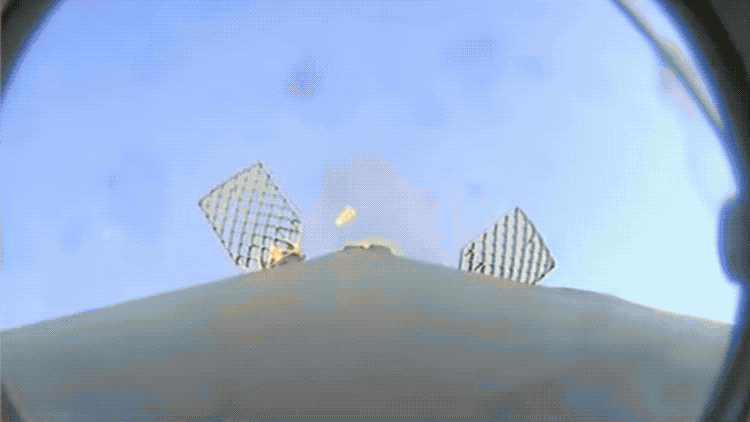SpaceX’s Dragon capsule is once again heading to the International Space Station.
The company launched its 22nd Commercial Resupply Services (CRS) mission for NASA on Thursday. This is the fifth capsule SpaceX has sent to ISS in the last twelve months, SpaceX director of Dragon mission management Sarah Walker noted in a media briefing Tuesday. It’s also the first launch of the year on a new Falcon 9 rocket booster.
The rocket took off from Cape Canaveral in Florida at 1:29 PM eastern time, right on schedule despite the threat of storm clouds from the south and east. The first stage separated as planned and touched down on the “Of Course I Still Love You” droneship in the Atlantic Ocean eight minutes after launch. The second stage, which takes the capsule to orbit, separated 12 minutes after launch, also right on schedule.
The Falcon 9 Rocket launch vehicle is sending more than 7,300 pounds of research materials, supplies, and hardware, including new solar arrays, to the ISS crew. It’s the second mission under SpaceX’s new CRS contract with NASA; the first took place last December.
Dragon is carrying a number of research experiments to be conducted on the ISS, including oral bacteria to test germ growth with Colgate toothpaste; a number of tardigrades (also affectionately called water bears), primordial organisms that will attempt to fare and reproduce in space environments; and an investigation that will study the effects of microgravity on the formation of kidney stones – an ailment that many crew members display an increased susceptibility to during spaceflight.
The capsule is also delivering fresh food, including apples, navel oranges, lemons, and avocados.
Of the over 7,300 pounds of cargo, around 3,000 pounds will be taken up by a new roll-out, “flex blanket” solar array developed by space infrastructure company Redwire. As opposed to more traditional rigid paneled solar arrays, flex blanket technology provides more mass and performance benefits, Redwire technical director Matt LaPointe told TechCrunch.
The arrays were placed in the Dragon’s unpressurized trunk. It’s the first of three missions to send iROSA solar arrays to the station, with each mission carrying two arrays, LaPointe said. Once installed, the six iROSA arrays will collectively produce over 120KW of power. Redwire, which announced in March that it would go public via a merger with a special purpose acquisition company, says the new iROSA arrays will improve the ISS’s power generation by 20-30%.
The Dragon capsule is set to arrive at the space station at around 5 AM on June 5, where it will autonomously dock on a port of the Harmony module of the ISS. It will spend more than a month with the station before splashing down in the Atlantic with research and return cargo.
